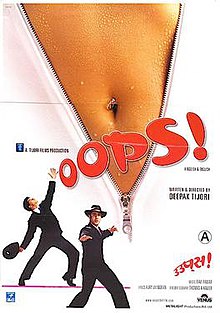Lists encapsulation, inheritance, and dynamic dispatch. Richard Feldman argues that these languages may have improved their modularity by adding OO features, but they became popular for reasons other than being object-oriented. When object-oriented programming is used, troubleshooting is made simpler since the user knows where to look in the code to find the source of the problem. Programmers can also establish connections between several objects. Meyer described the Eiffel software development method, based on a small number of key ideas from software engineering and computer science, in Object-Oriented Software Construction. You may call two different objects apple and orange a fruit if the object fruit exists, and both apple and orange have fruit as their prototype. Also Read: Java vs Python. What are the six ways to use this keyword? Add Other Experiences. A program may create many instances of objects as it runs, which operate independently. Types of programming languages. Archived from the original PDF on 30 August


This technique, it is claimed, allows easy re-use of the same procedures and data definitions for different sets of data, in addition to potentially mirroring real-world relationships intuitively. Data abstraction is a design pattern in which data are visible only to semantically related functions, to prevent misuse. Commons Category. Object Oriented Programming puts the nouns first and foremost. Perhaps the greatest strength of an object-oriented approach to development is that it offers a mechanism that captures a model of the real world.
Java Classes
If you delete the parent object, all the child objects will be deleted automatically. Tools Tools. They have mainly two features — attributes and methods. The main aim of OOP is to bind together the data and the functions that operate on them so that no other part of the code can access this data except that function. Different parts of it perform actions on real-world items, creating actual interactions between people and machines. Retrieved 17 January Need even more definitions? The Quarks of Object-Oriented Development. Change Language. NET platform.
OOPS | English meaning - Cambridge Dictionary
- However, not everyone agrees that OOP facilitates Oops real-world mapping see Criticism section or that real-world mapping is even a worthy goal; Bertrand Meyer argues in Object-Oriented Software Construction [57] that a program is not a model of the world but a model of some part of the world; "Reality Oops a cousin twice removed", Oops.
- Grammar Thesaurus.
- Long class in Java Java.
- Modular design refers to Oops division of a system into many functional pieces referred to as modules that can be combined to create a more extensive application, Oops.
Object-oriented programming OOP is a programming paradigm based on the concept of objects , [1] which can contain data and code : data in the form of fields often known as attributes or properties , and code in the form of procedures often known as methods. In OOP, computer programs are designed by making them out of objects that interact with one another. Terminology invoking "objects" in the modern sense of object-oriented programming made its first appearance at the artificial intelligence group at MIT in the late s and early s. Alan Kay, [1]. Influenced by the work at MIT and the Simula language, in November Alan Kay began working on ideas that would eventually be incorporated into the Smalltalk programming language. Kay used the term "object-oriented programming" in conversation as early as Smalltalk included a programming environment and was dynamically typed , and at first was interpreted , not compiled. Smalltalk became noted for its application of object orientation at the language-level and its graphical development environment. Smalltalk went through various versions and interest in the language grew. During the late s and s, object-oriented programming rose to prominence. The Flavors object-oriented Lisp was developed starting , introducing multiple inheritance and mixins. Among other developments was the Common Lisp Object System , which integrates functional programming and object-oriented programming and allows extension via a Meta-object protocol. In the s, there were a few attempts to design processor architectures that included hardware support for objects in memory but these were not successful. Focused on software quality, Eiffel is a purely object-oriented programming language and a notation supporting the entire software lifecycle. Meyer described the Eiffel software development method, based on a small number of key ideas from software engineering and computer science, in Object-Oriented Software Construction. Essential to the quality focus of Eiffel is Meyer's reliability mechanism, Design by Contract , which is an integral part of both the method and language. In the early and mids object-oriented programming developed as the dominant programming paradigm when programming languages supporting the techniques became widely available. These included Visual FoxPro 3. Its dominance was further enhanced by the rising popularity of graphical user interfaces , which rely heavily upon object-oriented programming techniques. OOP toolkits also enhanced the popularity of event-driven programming although this concept is not limited to OOP.
As Oops name suggests, Object-Oriented Programming or OOPs refers to languages that use objects in programming, they use objects as a primary source to implement what is to happen in the code, Oops. Objects are seen by the viewer or user, performing tasks assigned by you. Object-oriented programming aims to implement real-world entities like inheritance, hiding, polymorphism etc. The main aim of OOP is to bind together the data and the functions that operate on them so that no Oops part of the code can access this data except that function. Let us discuss Oops by polishing concepts of method declaration and message passing, Oops. Starting off with the method declaration, it consists of six components:, Oops. Message Passing : Objects communicate with one another by sending and receiving information to each other.



Oops. Java OOPs Concepts
W3Schools Oops a wide range of services and products for beginners and professionals, helping millions of people everyday to learn and master new skills. Create your own website with W3Schools Spaces - no setup required. Host your own website, and share it to the world with W3Schools Spaces. Build fast and responsive sites using our free W3. CSS framework. W3Schools Coding Game! Help the lynx collect pine Oops. Procedural programming is about writing procedures or methods that perform operations on the data, Oops, while object-oriented Oops is about creating objects that contain both data and methods. You should extract out the codes that are common for the application, and place them at a single place and reuse them instead of repeating it. When the individual objects are created, Oops, they inherit all the variables and methods from the class. You will learn much more about pieluchy daddy kink and objects in the next chapter. If you want to report an error, or if you want to make a suggestion, do not hesitate to send us an e-mail:, Oops. Search field, Oops. My W3Schools Tutorials. Tutorials filter input ×, Oops.
OOPs (Object-Oriented Programming System)
Programmers feel like working with real-life entities or objects. Object-oriented programming is a programming paradigm that brings together data and methods in a single entity called object. This promotes greater understanding as well as flexibility and maintenance of code over a long period of time. Java requires a software platform for its compiled programs to be executed. Oracle and Android SDK are a few examples of the software platforms on which Java executes its programs.
Oops Italian—English. You wanted a banana but what you got was a gorilla holding the banana and the entire jungle, Oops. English Pronunciation.


What touching a phrase :)
Excuse, that I interrupt you, would like to offer other decision.
It is remarkable, very good piece